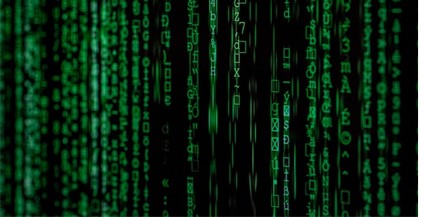Alex Arlint is an electrical engineer and program manager, who moved from Active-Duty Air Force to pursue a career in the defense industry. In the following article, Alex Arlint discusses the transformative capabilities of AI and machine learning in the world of software engineering. From automating mundane tasks to enabling intelligent insights from vast data sets, we explore how these technologies are reshaping the software development process, enhancing the end-user experience, and propelling us into a future where software engineering reaches unprecedented heights.
From automation to data analytics to accurate decision-making, artificial intelligence (AI) and machine learning (ML) are transforming the software engineering industry in previously unseen ways. However, the role of these technologies is less box office cinema and more useful for taking over when human speed and power aren't enough.
Alex Arlint says that while
software engineering is undoubtably an exciting field to work in, some tasks are repetitive and time-consuming, leaving engineers tied to menial jobs while they could be developing the world's latest and greatest applications. But not anymore. With AI and ML by their side, mundane tasks are automated, allowing professionals to focus on more innovative jobs.
Alex Arlint Says AI and ML are Non-Interchangeable Terms
Typically, people use the terms interchangeably to describe platforms or apps that utilize automation. But to fully understand the power both technologies harness for software engineers, experts believe reinstating the differences matters. Alex Arlint says that they may be used simultaneously, but they are not the same.
Artificial intelligence is a machine's ability to mimic intelligent human behaviors (i.e., problem-solving, planning, and learning). Tools fitting this category achieve this by scouring data and identifying patterns, using algorithms to simulate human reasoning before making decisions.
Machine learning, Alex Arlint says, is a category of AI that utilizes data to continue learning without necessitating specific human-led programming. Software engineers craft algorithms that let computers continuously use data to constantly improve processes.
AI and ML Are Transforming the Software Engineering World Like Never Before
Alex Arlint explains that both technologies are already altering the ways applications are built, including automatic code generation, design-to-code tools and platforms, and models that automate parts of application testing.
While some software engineers believe the use of machine learning models is only starting, that isn't strictly true. A recent study showed that around
40%
of industry-based organizations are currently making moderate or extensive use of ML models during application development processes.
Perhaps the most poignant ways AI and ML are leveraging the power of automation and data in software engineering are:
Automatic Code Generation with ML Augmentation
As the calendar flips ever-further into 2023, a new wave of coding assistants for software engineers and developers are coming to the forefront.
Copilot, Tabnine, and CodeWhisperer are just three ML-enabled code creation tools available for engineers to integrate into development environment tools and automatically craft code in response to a comment.
Alex Arlint notes that such resources' foundations rest on hyperscalers' language models like OpenAI's GPT-3.5, the basis of ChatGPT. The languages are altered and optimized specifically for software code creation, and Gartner predicts that 50% of developers will use ML-powered automatic code generation tools by 2027 — a far cry from the sub-5% using them today.
Application Design Through Machine Learning
AI and ML's impacts on software engineering isn't restricted to embedding models inside applications. It encompasses the tools designers utilize to form engaging user experiences for their products.
Alex Arlint says that the more digitized the world becomes, the more software engineers are automating the transference of design assets and specifications from designers to engineers. And these ML-based systems that are facilitating this process, with the capabilities of the tools expected to enhance swiftly, quickening times to deployment.
Those at TechRepublic believe a new role will develop in the industry based on this technological adoption — design strategist. These professionals will lead teams of developers and designers to deliver improved applications faster.
 Application Testing with AI and ML
Application Testing with AI and ML
Alex Arlint explains that artificial intelligence and machine learning are also making waves in imperative areas of app testing, including:
- Planning and prioritization
- Creation
- Maintenance
- Data generation
- Defect analysis
- Visual testing
Some industry participants believe the ongoing shortage of experienced tests, particularly those with the necessary skills to programmatically craft tests, has sparked the rise in AI-augmented solutions.
Alex Arlint also notes that the innovative software-testing tools enhance tester productivity through utilizing algorithmic approaches to increase efficacy of test automation. In fact, it's making such significant waves that Gartner expects 80% of enterprises to integrate augmented testing tools by 2027, which is quite a leap from the current 10%.
The vast amount of data processed in a fantastically short duration bodes well for the future of artificial intelligence and machine learning as businesses can generate forecasts and come up with informed decisions to improve performance.
 Application Testing with AI and ML
Application Testing with AI and ML